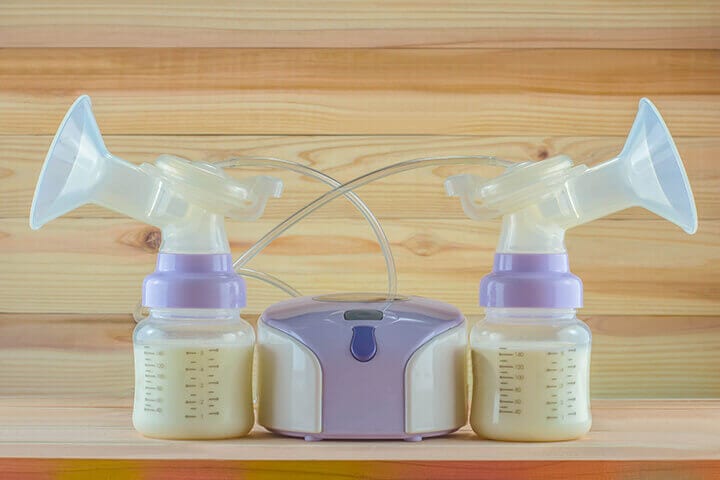Mothers, someone out there is silently listening to your prayers and relentlessly working on to make parenthood easier. Someone has finally designed advanced breast pumps that don’t horribly suck at its job!
If you have breastfed a baby anytime in the last few years, you know how backward the technology is and why the vital part of baby’s life feels like a nightmare. However, seems that recent technological advancements have blessed the breast pump market. With new, innovative, and painless breast pumps, the market has been witnessing huge growth. According to a research firm, Allied Market Research, the global breast pump market was valued at $540 million in 2015 and is expected to garner $829 million by the end of 2022, registering a CAGR of 6.6% from 2014 to 2022. The report states that the advent of electric breast pumps is the biggest driver of the market. Here are some of the most welcoming technological developments in the market that the women of the 21st century cannot be more thankful of. But before that, you have to be sure whether you need a high-end model of a breast pump or not!
Why and how often you pump?

Face it! Breast pumps are expensive. Thankfully, not every mother needs it. Some moms are comfortable with any type of breast pump, while others may have to use top of the line pumps and still able to express only ounce of milk at a time. Never forget, the quantity of milk you pump is not the indicator of how much milk you make. A baby can drink about 70% of the milk in a breast whereas a pump can manage to remove only about 30%. Thus, if you are able to pump several ounces of milk easily, you should not worry about buying hospital grade breast pumps. On the other hand, if you are issues with pumping baby milk, get rid of lower-end models and buy a higher-end model, having stronger motors and more suction-and-release cycle per minute.
What’s next: wearable breast pumps!
The traditional electric breast pump enforces mothers to go to restrooms or some private space, undress partially, and collect milk. This challenge is overcome by a novel breast pump, manufactured by a California-based startup, Willow, which has transformed the pumping experience for women. The design of Willows is a result of in-depth research and in-person interviews with dozens of women. One of the key aspects regarding the pump is that it is easy to assemble, use, and clean as it contains just a few basic parts that can be snapped together and only two parts need cleaning.
The ultimate aim of the company is to offer women an advanced breast pump that makes no noise, has a storage bag, and a battery system, which enable mothers to pump without others noticing it. Thus, Willow can be used while doing the daily chores and even during office hours. It gives a comfortable experience over the traditional ones as it offers less suctions and adjusts speed depending on the flow of milk and women no longer have to plan their lives around pumping. Apart from Willow, the market has seen remarkable technological innovations such as Naya and Elvie breast pumps.
To compete with Willow pump, Elvie, the company that previously released a connected kegel trainer, has launched a cordless, wearable breast pump. Similar to Willow pump, Elvie also fits inside a standard bra, however, it does not require a separate, disposable bag to collect pumped milk. Instead, the milk is collected in a reusable bottle. The Elvie pump can convey the pumping history for each breast via a smartphone application. Moreover, mothers won’t have to meddle with the buttons of the device when it is tucked inside the bra as the settings can be changed from the app itself. Most importantly, the app provides notification if the bottle is full as well as it automatically stops pumping.
Another novel breast pump is launched by Naya. The breast pump developed by Naya Health uses water instead of air to create compression and suction, which makes pumping a pleasant experience. In fact, women report that the sound of water is more soothing than an air vacuum. Moreover, Naya pump is so compact that women can carry it to their office.
New opportunities
Not just breast pumps, women’s bra also witnessed a complete revolution over the past few years. A startup named Lilu has developed an automated bra that aids breastfeeding mothers in boosting milk supply. It is meant to be worn over or even attached to a usual bra. It utilizes a built-in compression mechanism that stimulates the flow of milk and prevents clogging of glands.
The startup was founded by M.I.T. and UPenn graduates, Adriana Vazquez and Sujay Suresh, who understood the issues with breastfeeding and decided to take some firm actions to help needs of new mothers. The Lilu bra uses air to massage the chest as it is connected to a breast pump and is compatible with standard breast pumps. According to the report by TechCrunch, Vazquez believes, “After having a child, I realized how difficult a working mother’s life is and how little I knew about the challenges. And the biggest culprit was the breast pump.”
According to her, on average women spend up to three hours in pumping every day, which costs them almost a month of their lives in a year. Thus, the company developed an easy-to-use and rechargeable bra to reduce these numbers.
The thing is there is no lack of initiatives in the R&D, especially if you are willing to tackle the first few challenges. Innovative products, such as Willow and Elvie, have already made their mark on the breast pump market, but more are arriving, and the trend of innovations will continue. Of course, these innovations won’t be as cheap as traditional pumps. However, there is hope that the manufacturing companies look after the pricing and help new breastfeeding parents. Eventually, these products will be standard on the market. Till then, happy pumping!
Author Bio:
Swamini Kulkarni holds a bachelor’s degree in Instrumentation and control engineering from Pune University, and works as a content writer at Allied Market Research. She is deeply fascinated by the impact of technology on human life, and loves to talk about science and mythology. When she is not glued to the computer, she loves to read, travel, and day dream about her areas of interest.

 Swamini Kulkarni holds a bachelor’s degree in Instrumentation and control engineering from Pune University, and works as a content writer at Allied Market Research. She is deeply fascinated by the impact of technology on human life, and loves to talk about science and mythology. When she is not glued to the computer, she loves to read, travel, and day dream about her areas of interest.
Swamini Kulkarni holds a bachelor’s degree in Instrumentation and control engineering from Pune University, and works as a content writer at Allied Market Research. She is deeply fascinated by the impact of technology on human life, and loves to talk about science and mythology. When she is not glued to the computer, she loves to read, travel, and day dream about her areas of interest.